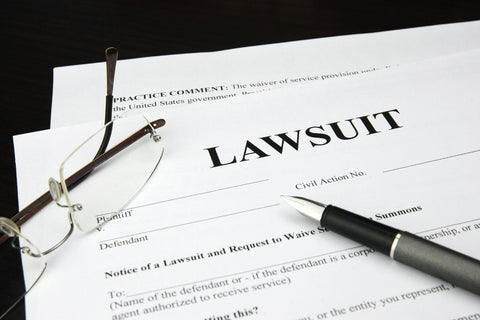How to File a Civil Complaint Without an Attorney

Most people think civil litigation is incredibly complex. But that’s only partially true. While there is no doubt that filing or defending against a civil lawsuit can indeed get complicated, the basic nuts and bolts of a civil lawsuit are quite simple and easy to follow. As we’ve said before, it is always a good idea to hire a competent attorney if you can afford to spend several thousands of dollars in legal fees. However, when that is not an option, it is more than possible to represent yourself in a civil lawsuit, which starts with filing a complaint.
When someone has been harmed by the actions of another, they can file a civil complaint in any state in the country. For example, if you have been rear-ended in an automobile accident and suffered an injury, you will likely want to sue the person who hit you to recover damages sufficient enough to compensate you for that injury. Likewise, if you have a binding contract with someone and they fail to hold up their end of the bargain, you may need to file a lawsuit to recover your losses due to that breach of the contract.
The first step to beginning any lawsuit is to file a civil complaint (in Texas, a complaint is called a petition, but it is the same thing). In the complaint, the Plaintiff (the person bringing the lawsuit) will allege how they have been harmed by the Defendant (the person who must answer the lawsuit). The Plaintiff does not need to prove their case at this time, they just need to make allegations that, if true, would constitute a claim for relief. Of course, a plaintiff should never make allegations that cannot eventually be proven at trial.
However, simply alleging that you have been harmed is not quite enough. You must allege a type of harm that your state specifically recognizes as a recoverable cause of action (sometimes called a claim for relief). For example, if you trip on the sidewalk you cannot necessarily sue the city for your damages. You will need to allege that the city (or someone else) was negligent in some manner. Perhaps the sidewalk was in a poor state of disrepair. In that case, you can likely allege that the city had a duty to keep the sidewalks in good condition, they failed to perform that duty, and as a direct result of that failure, you were injured. Each specific aspect of a cause of action is known as an element of a claim. If a Plaintiff can prove each element of their claim, they should win their case.
Similarly, if you have been physically attacked by someone, you can probably bring a civil lawsuit for battery if you can allege that the person physically contacted you and you suffered harm as a result of that physical contact.
The elements used above are a general example only! The specific elements of a negligence and battery claim in your state may vary!
The best way to discover the elements of your claim is to ask the librarian of your local law library. Although they won’t be able to give you legal advice, they should be able to tell you where to look to find the individual elements of your claim.
Once you know the elements of each claim/cause of action, you need to allege these facts in your complaint and inform the court (and the defendant) what specific relief you are requesting (such as economic damages or emotional distress damages for pain and suffering).
However, it is VERY important that your allegations are laid out in the correct format. If you fail to follow the proper formatting rules, you will likely face a motion to dismiss from the defendant, wherein they will allege that you have not followed proper court procedure. For example, the State of Oregon requires that all pleadings filed in court must be on lined pleading paper (UTCR 2.010(4)), whereas the State of California (and many other states) do not have this requirement.
Lawsuitforms.org has made sure that each form we offer for purchase has been properly formatted according to each individual state’s rules of civil procedure and their trial court rules. Using our forms will greatly reduce the chances that your complaint or answer is attacked for a failure to follow proper court procedures.
Once your complaint is written, it will need to be properly served on the defendant. The defendant will then have a certain amount of time (usually 30 days) to file their answer. After an answer is filed, both sides will engage in the discovery process, usually by first sending requests for production of documents.
Currently, lawsuitforms.org offers form packets and instructions for filing a complaint, answer, and request for production of documents in the following states: California, Florida, Georgia, Illinois, New York, North Carolina, Ohio, Oregon, Pennsylvania, and Texas! More states will be added in the future, so check back regularly if you need forms for another state.
Hopefully, this post has made understanding the first steps of civil litigation a little bit less confusing and has shown you the basics of how to file a civil complaint. Procedures related to filing an answer and sending a request for production will be covered in future posts. Thank you for reading and good luck!